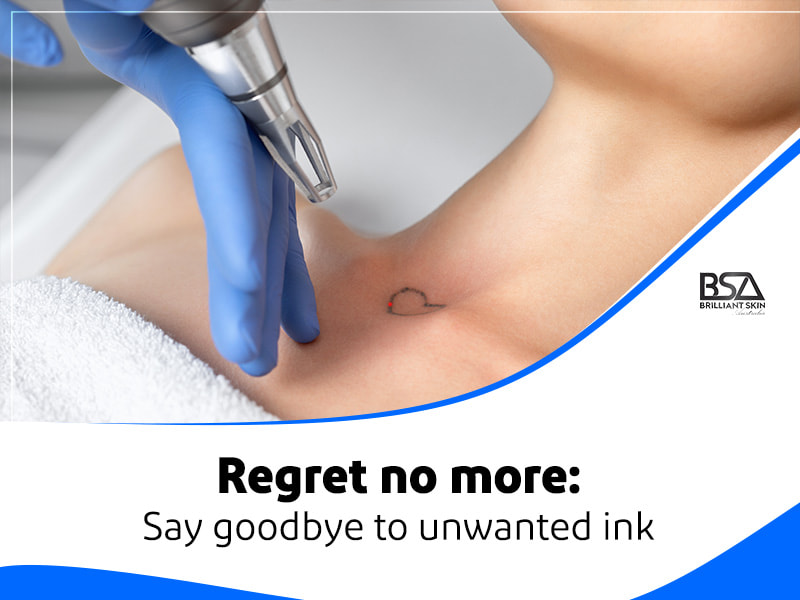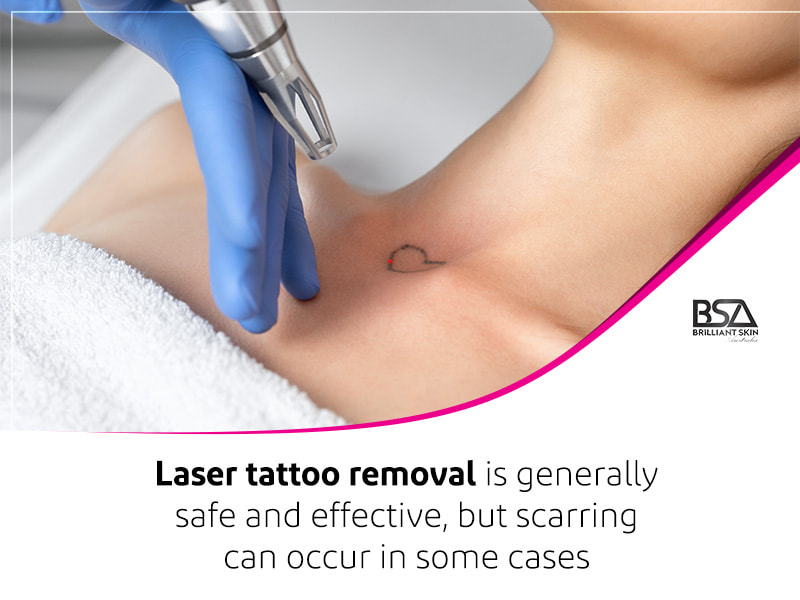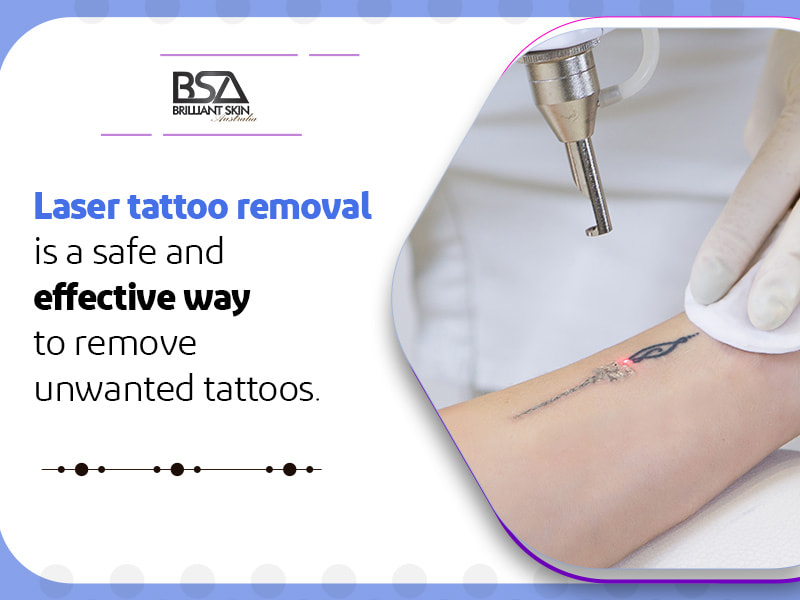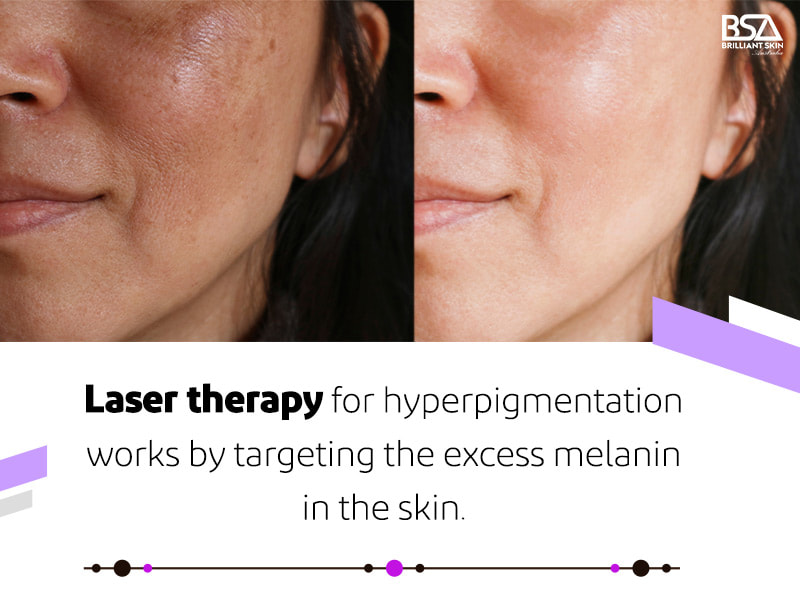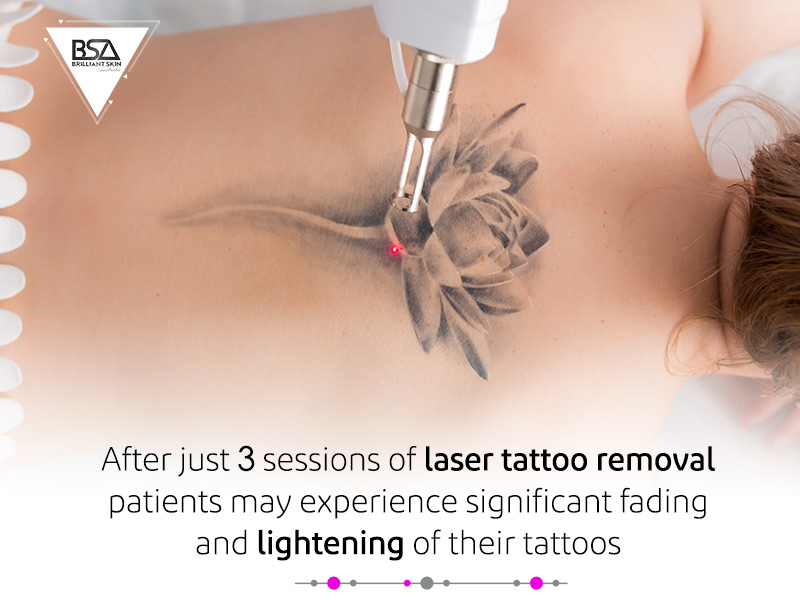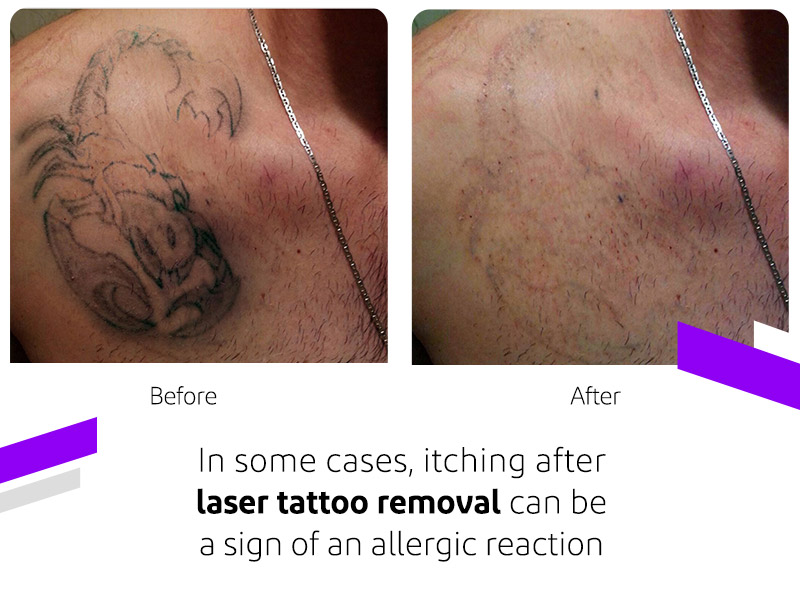Q Switch Laser Tattoo Removal Results
- Updated September 18, 2022
- by Honey Seida
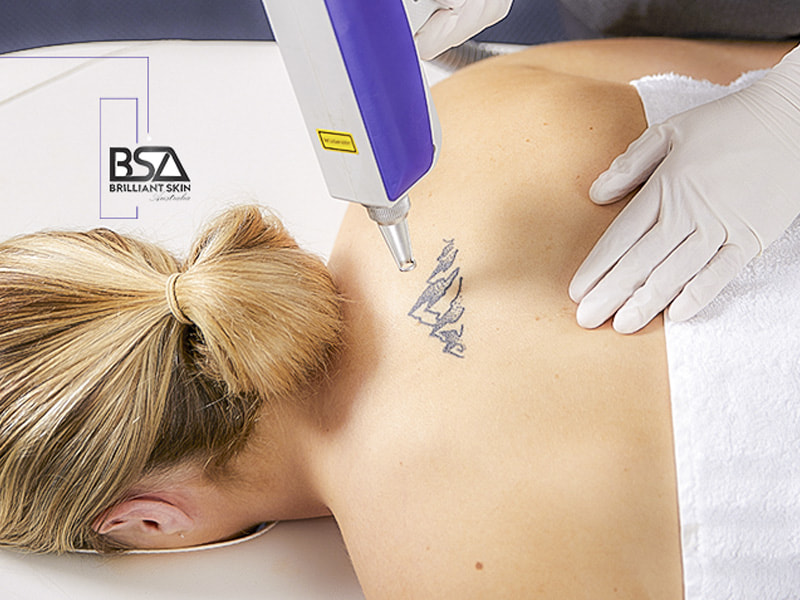
Tattoos are very popular with young people, but with the passage of time, it is possible that a person will eventually be dissatisfied with their tattoo and want to remove it from their skin. With the advancement of technology, there are now methods available for removing tattoos that do actually produce results, the most effective of which we are going to focus on today. Stay with us to learn more about Q Switch laser tattoo removal results.
Q-Switched Laser Tattoo Removal
Q switch laser is the most suitable method for removing all kinds of tattoos, moles, and freckles. This laser is very strong and safe for removing tattoos and does not harm the skin in any way. Laser tattoo removal with Q-switched laser will give you the least number of complications and the best result.
Q-switched lasers are extremely precise, making them the go to device when it comes to sensitive procedures such as eyebrow or eyeliner tattoo removal.
Read more: Before & Aftercare Laser Tattoo Removal
Factors Affecting Laser Tattoo Removal Results
Smaller tattoos require fewer laser pulses, while larger ones require more pulses. In any case, it takes several treatment sessions to get rid of the tattoo completely. After each visit, your tattoo should gradually fade. Depending on the location of the tattoo, you may want to apply a topical numbing cream beforehand. Factors affecting Q Switch laser tattoo removal results include:
Skin Type
- Tattoo removal requires laser penetration into the dermis without causing significant damage to the surrounding skin.
- As Melanocytes absorb laser energy, one of the considerations is skin type.
- Since melanin and tattoo ink have different absorption spectrums, successful treatment outcomes can be achieved on darker skin types although adverse reactions, such as hypo/hyper pigmentation, are higher.
- Decreased efficacy with darker skin types can be seen due to lower settings required and longer times between treatments to minimise reactions.
- Fitzpatrick skin type scores as its corresponding number of 1 to 6
Location
- Blood and lymphatic supply vary by anatomic region, as does the efficacy of tattoo removal in such corresponding anatomic areas.
- The head and neck have the largest amount of lymph nodes and have a large vascular supply. Thus, they are able to mount an increased immune response to better remove the ink particles.
- The upper and lower trunks also have a vast vascular and lymphatic supply, trailing behind the head and neck regions.
- The proximal extremities have more lymphatic supply than the distal extremities, making distal extremities the slowest to remove.
Colour
- The differences in pigment size and composition lead to the difference in the number of treatments needed.
- Professional and amateur tattoos differ in their physical and chemical composition.
- Black ink is the easiest to remove as it easily absorbs the most amount of energy.
- Red inks are easier to remove in comparison to other colours.
- Other colours, such as blue, green, yellow, and orange are difficult to remove and warrant higher amount of points on the Kirby-Desai scale.
- White is impossible to remove.
Amount of Ink
The amount of ink and size within a tattoo will affect the treatment. The difference in the amount of ink, lies within the type of tattoo the client has; amateur or professional.
In the Kirby-Desai scale, the amount of ink is divided into four categories;
- amateur (letters, words, or small symbols)
- minimal (one colour, simple design)
- moderate (one colour, complex design)
- significant (multi-coloured, complex design)
Absorption of Wavelengths
The most common wavelengths used to remove tattoos are:
- 1064nm (infrared light) absorbed by black and most other ink colours.
- 532nm (green light) is absorbed by red and orange inks.
- 650nm, 694nm, 755nm (red light) are absorbed by green ink.
- 585nm (yellow light) is absorbed by blue ink.
Different wavelengths are better for removing different tattoo colours:
- Nd:YAG 1064 nm: creates a near-infrared light which is poorly absorbed by melanin and haemoglobin, making this the safest laser for all skin types including darker skin. This wavelength is also absorbed by all dark tattoo pigments.
- Nd:Yag 532 nm: creates green light (absorbed by red & orange targets). As it is highly absorption by melanin, 532nm is recommended for use on skin types I – IV.
- Alexandrite 755 nm: weakest and has a slightly lower incidence hyperpigmentation than a ruby laser. Works well on green and dark tattoos but not well on black and blue ink. It doesn't work on red, orange, brown, etc.
- Ruby 694 nm: creates red light (highly absorbed by green and dark targets). It’s highly absorbed by melanin. This laser may cause hyper or hypopigmentation in darker skin types.
Q Switch Laser Tattoo Removal Contraindications
Although Q Switch laser is able to give you the best results when it comes to tattoo removal, it may not be for everyone. The following are the contraindications of Q-switched laser tattoo removal:
- Pregnancy or trying to become pregnant
- Breastfeedingng (Risk of transfer of ink to baby)
- Cancer or Chemotherapy (light sensitivity and compromised immunity)
- Users of Roaccutane
- within the last 6 months
- Users of Retin-A or Tretinoin in the last 2 weeks
- Diabetes
- Autoimmunene, peripheral vascular, or bleeding disorder
- Tanned or sunburned skin in the area of the tattoo
- Renal Failure (Acute or Chronic)
- Multiple Sclerosis or Epilepsy
- Surgical metal pins or plates under the tissue to be treated
- Pacemakers
- Photosensitising medication or St. John's Wort in the past month
Final Word
The best lasers for removing tattoos are devices that are equipped with Q-switched capabilities, known as Q-switched lasers. This laser emits a powerful pulse that penetrates the membranes of the skin. Q switch laser is used to remove all kinds of tattoos, brown spots, and other skin lesions. Laser light pulses target melanin deep in the skin or on the surface of the skin and destroy the pigments. Q switch laser tattoo removal are permanent and one hundred percent safe.

